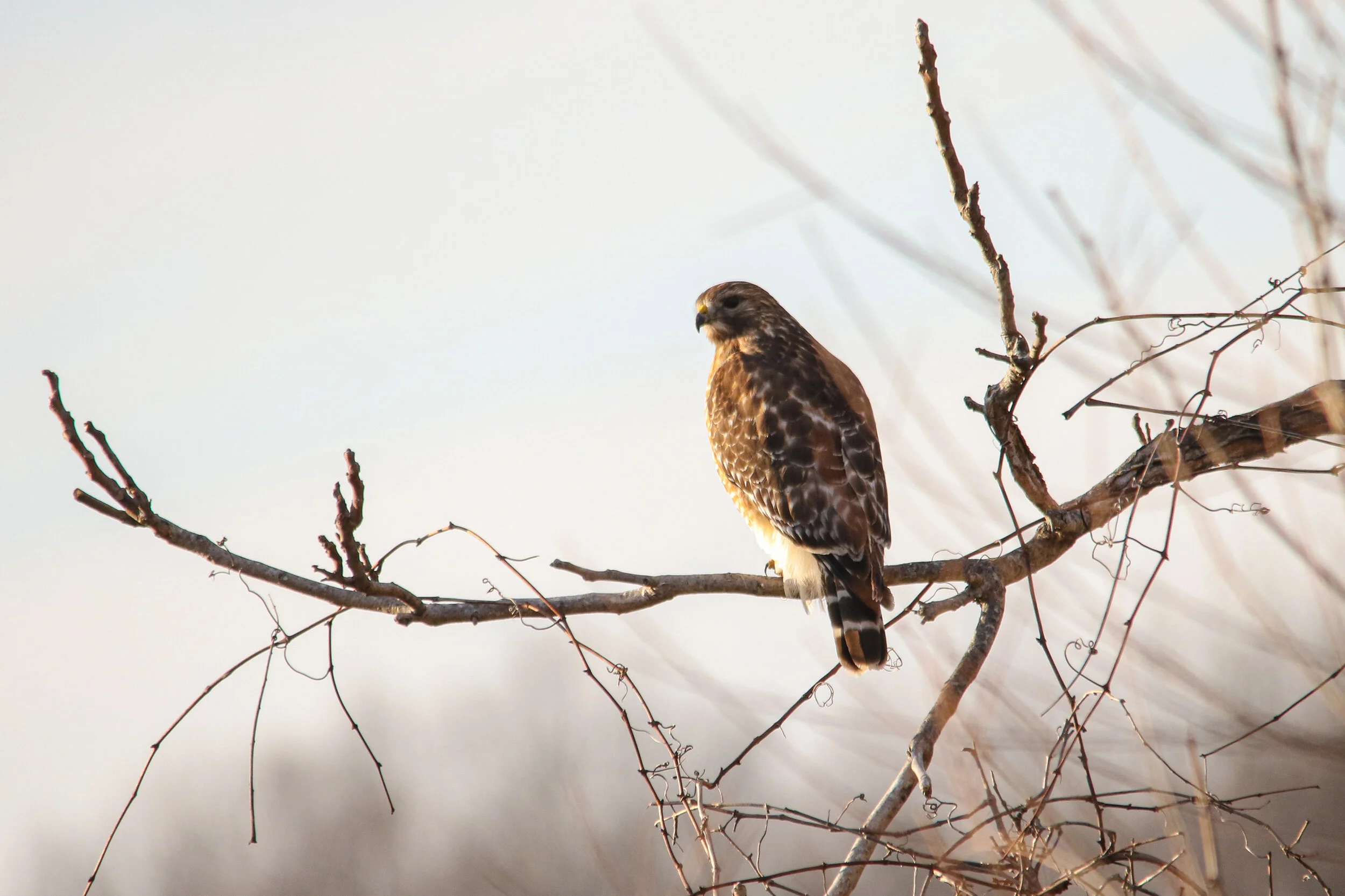Photo: Red-shouldered Hawk, Annaliese Meistrich
Annaliese Meistrich
The winding trail led to a grassy clearing where my environmental science teacher paused, giving us a moment to take in the open landscape. He then proceeded to describe the hidden intricacies of this peaceful meadow: a few Song Sparrows that produced a lovely tune, the fluttering Tree Swallows swooping above our heads and the far-off cry of a Red-shouldered Hawk. The seemingly simple view in front of me suddenly teemed with life, illuminated by my teacher’s vibrant narrative.
Through this class, it didn’t take long for me to become hooked on birding. Soon after the class began, I was spending hours along a trail, trying to identify every last bird I caught a glimpse of. Who knew that taking environmental science would lead me down this eventful path?
As I delved into the world of birding, I realized that I knew very few teen birders. Most of my fellow birdwatchers were adults, whose company I valued, but I couldn’t help but wonder if there were any other students like myself who had a not-yet-discovered passion for birding. It seemed likely that there were students currently sitting in classes who were looking for a sense of outside fulfillment that could very well be satisfied by bird-watching. There is something so captivating about watching birds – their incredible abundance and diversity adds to one’s love of nature. It truly is a great way to get outdoors and foster a meaningful connection with the environment around you. Because birds are literally everywhere, becoming a birder will open your eyes and force you to be an observer, constantly picking up clues as to their behavior and habitat.
Life as a biology student consists mostly of staring at photos of wildlife in class but why not head out onto the local trails and find it yourself? After being stuck behind a desk all day, it is rewarding to hit the trails and bring some serenity into your mind. You may find yourself more engaged in those science classes after seeing how it all fits into the bigger picture. There is also a physical aspect to it: whether you are running around chasing that far-off hawk, or wandering around a field, you are getting those steps in! Birding is great exercise and has a positive impact on your overall health.
As young kids in middle or high school, we are drawn to social gatherings, because – let’s face it – doing things with your friends is fun! Birding is a great way to make new friends and connect with students you might not otherwise meet. Get a group of your friends together and go on a hike, documenting all the things you see. From birds to butterflies, or even wildflowers, you can have amazing experiences together. I particularly enjoy heading out with
some of my fellow young birders and keeping track of the rare bird alerts for our area! It is challenging and fun to find these rarities with a group.For me, the passion for birding continued beyond the trails and into activism. When I reached out to Audubon Society of Northern Virginia, I would never have guessed that it would have blossomed into an intern position. I hope to share my love of birding with other teens by continuing my efforts for more teen involvement. Currently, I have given presentations to youth groups such as the Cub Scouts and I am seeking any opportunity to offer more programs. I am also working to increase birding opportunities in the environmental science curriculum of Loudoun County Public Schools and connect with other school birding clubs. I am very enthusiastic about the future of this internship and I cannot wait to see where ASNV takes it.

